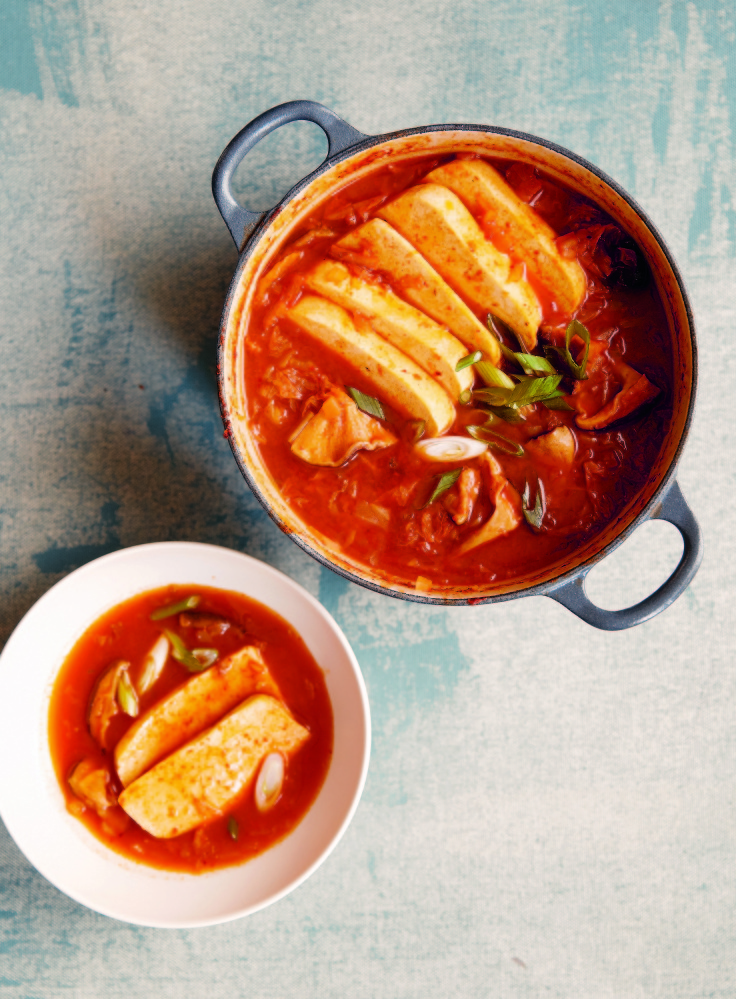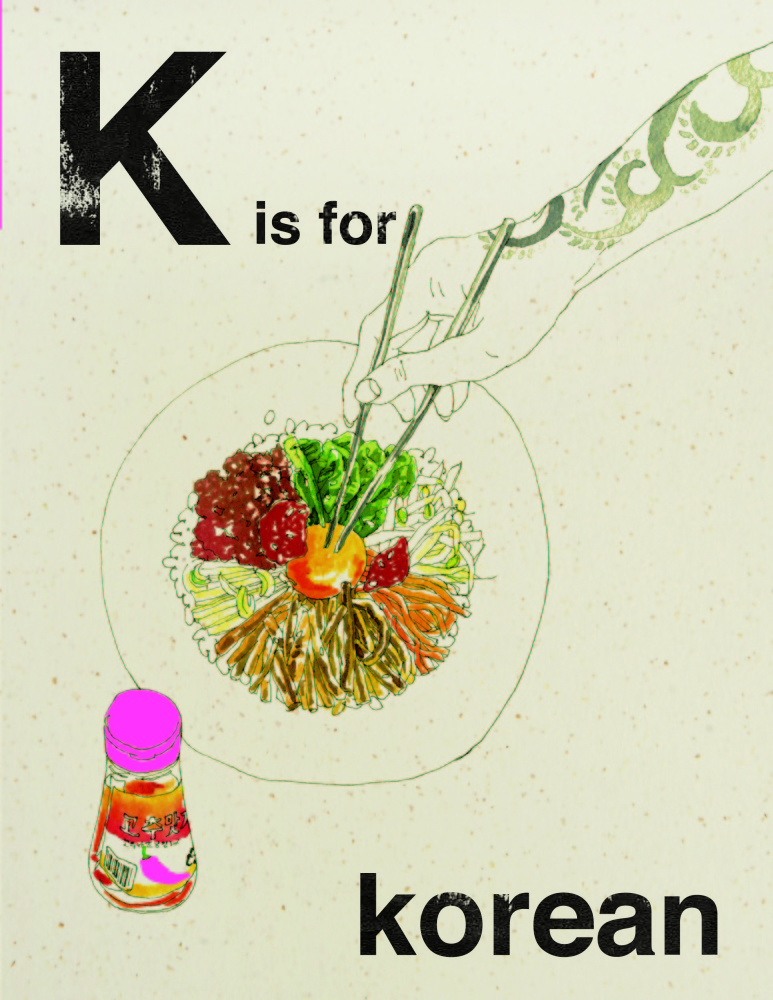“K is for Korean.” By Rukmini Iyer, Quadrille, $19.99
For a crash course in Korean basics, look no further than “K is for Korean,” part of a new series from Quadrille called Alphabet Cooking. Other titles so far include “M is for Mexican” and “S is for Sri Lankan.”
The small, slim book has neon pink accents and bright, full-page photographs. The approach is stripped-down – no long exposition on culture or technique, just straightforward ingredients and instructions. There are Korean classics, like bulgogi – marinated beef – and bibimbap – a rice bowl with stir-fried vegetables and meat. And there are head-turning concoctions like budae-jjigae, a stew made with Spam, hot dogs, baked beans and instant ramen – as well as kimchi and Korean spices – devised in the aftermath of the Korean War to make use of surplus food from U.S. military bases.
The 50 recipes encompass small plates, condiments, sides and salads, broths and stews, big dishes, rice, noodles and desserts.
Very few of the recipes include more than three or four steps and many won’t take more than an hour to prepare and cook, but almost all require some specialized ingredients many home cooks likely don’t have on their shelves. Of critical importance are gochujang, a spicy red pepper paste; gochugaru, ground red pepper flakes; and kimchi.
One downside to Korean cooking (for non-Koreans) is that these three staple condiments have no good substitutes. Gochujang is a thick, dark red paste that imparts a unique funky-spicy depth to dishes. Gochugaru has a sharper, smokier spice that standard red pepper flakes can’t replicate. Kimchi, a fermented mix of vegetables – like cabbage, radishes and scallions – with spices is a ubiquitous feature of Korean cooking, an ingredient of many dishes and served as a condiment, too. Ultimately, if you don’t have these three ingredients in your pantry, you won’t get far in “K is for Korean.”
Luckily, sourcing these three staples is relatively easy. They should be available at Asian markets like Hong Kong or Veranda in Portland or Tran’s Market in Biddeford, and can be found at larger supermarkets, too. Spices and kimchi have long shelf lives, so you don’t have to go head-over-heels into Korean cooking before they go bad.
Once you procure the staples, preparing most of the recipes in “K is for Korean” is fairly simple.
Kimchi jjigae (tofu stew) is a perfect example. It was a recent wet, cool evening and I was sick when I tried this recipe. While it didn’t heal me all the way, the brew of spice, funk and sweet definitely lifted my spirits, and the simplicity of preparation was easy on a mind and body wracked with walking influenza. The directions went like this: chop vegetables, sauté in oil, add spices and liquid, cook, serve. Even better, almost everything I needed was already in my kitchen. It was just a quick trip to my local Asian mart to pick up tofu, shiitake mushrooms and a large container of gochugaru.
I took a couple of liberties with the recipe, adding a chicken bullion cube to the stew and halving the liquid to concentrate the flavors. The result was exactly what I needed, tons of flavor, plenty of heat and the kind of comfort only a hot bowl of soup can bring. It piqued my interest in what else “K is for Korean,” has to offer, and I’ll certainly return to find out when I want to try something fast and easy.
Peter McGuire can be reached at 791-6325 or at:
pmcguire@pressherald.com
Twitter: PeteL_McGuire
KIMCHI JJIGAE (tofu stew)
Serves 4
1 tablespoon vegetable oil
9 ounces kimchi, roughly chopped
1 onion, finely chopped
1 clove garlic, minced
1-inch piece ginger, minced
1 teaspoon gochugaru
1 teaspoon gochujang
4-1/2 ounces fresh shiitake mushrooms, halved
2 teaspoons sea salt
Freshly ground black pepper
8 ounces firm tofu
1 spring onion, finely sliced, to serve
Heat the vegetable oil in a large saucepan, add the kimchi, onion, garlic and ginger, and stir-fry for 5 minutes.
Stir through the gochugaru and gochujang, then add the mushrooms, 8 cups water, sea salt and a good grind of black pepper.
Bring to boil, then lower the heat and simmer, for 25 minutes.
Slice the tofu in 1/2-inch slices. After the mixture has cooked for 20 minutes, taste it and adjust the level of salt if needed. Place the tofu on top of it, spoon some sauce over it, and cook gently for a further 5 minutes.
Top with the spring onion and serve immediately.
Send questions/comments to the editors.




